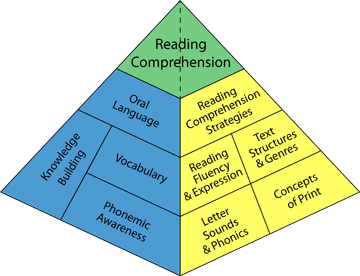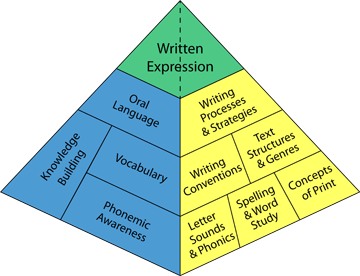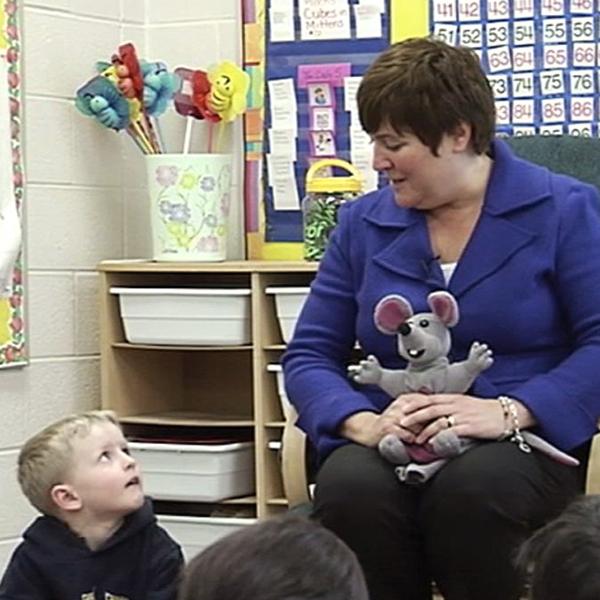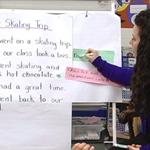Introduction to the Food Groups for Literacy
Literacy Pyramids for Reading and Writing
The Balanced Literacy Diet is a framework that presents literacy concepts using the familiar terminology of a healthy diet. Everyone knows that in order to grow and develop there are certain food groups we need on a daily basis. We also know it’s important to consume foods from these groups in balance and that some foods are more important at certain stages of development. Finally, we know that flavor and presentation are what make foods appealing and therefore more likely to be consumed.
Like great cooks, teachers create nourishing and enticing literacy lessons by drawing on their knowledge of the ingredients, their knowledge of the development of reading and writing skills (that is, which processes are most needed at which stage of development), and their creativity and imagination.
The Reading Pyramid
The purpose of teaching reading is to help students understand the meaning of what they are reading. There are some key "food groups" that research has shown are essentials of effective reading instruction to ensure that students will be able to read with fluency and understanding. The Reading Pyramid, like the food pyramid, provides a way to understand how the various food groups work together to support reading development.
The pyramid contains the Big Five that research has found to be essential to effective reading instruction: Phonemic Awareness, Phonics Instruction, Vocabulary, Fluency and Comprehension Strategies as well as other important components of literacy education.

Although the fundamental goal of reading is to understand or make meaning of the text, reading proficiency involves skills in a number of domains.
As illustrated in the pyramid, the building blocks of reading comprehension can be divided into two main groups: print-related skills (yellow components) and language-related skills (blue components).
The print-related components are those that promote a student’s ability to recognize words. To identify words, students need to: develop knowledge of the way print works (Concepts of Print), become aware of the individual sounds in words, learn to recognize each letter of the alphabet, and understand the connections between the sounds in words and the letters used to represent the sounds (the Alphabetic Principle).
The language-related components of the pyramid support a student’s ability to make meaning of text. Students need to develop their knowledge of the world around them (Background Knowledge) and their ability to comprehend spoken language (developing their vocabulary knowledge, their understanding of grammar).
In the Food Groups section of the website you will find information about the nature of each component (What is it and why is it important? How do you teach it? How do you assess it?) as well as view videos of teachers engaging children in lessons that promote students’ knowledge and understanding of these components. In addition, you may download Recipes for Literacy that provide more detailed information about specific activities that can be used in the classroom to engage children in these core literacy domains.
The Writing Pyramid
Writing, like reading, draws on several related skills and abilities. You also may have noticed that many of the skills that support reading development (such as Concepts of Print and Vocabulary) also support written expression. Similar to reading, writing also requires children to develop print-related skills such as phonemic awareness and knowledge of letter-sound correspondences. Students use this knowledge to be able to encode or spell words. Students also acquire other types of knowledge that support spelling such as the relation between word meanings and their spellings.
Recipe Sampler
Explore the Food Groups
To learn more about each of the components of a healthy literacy diet and to explore a treasure trove of delicious and nutritious classroom-tested recipes go to the Food Groups tab and work your way through the drop down menu.
Advice from Great Chefs!
Anybody can make you enjoy the first bite of a dish, but only a real chef can make you enjoy the last.
~Francois Minot~
You don't have to cook fancy or complicated masterpieces - just good food from fresh ingredients.
~Julia Child~
Give two cooks the same ingredients and the same recipe; it is fascinating to observe how, like handwriting, their results differ. After you cook a dish repeatedly, you begin to understand it. Then you can reinvent it a bit and make it yours. A written recipe can be useful, but sometimes the notes scribbled in the margin are the key to a superlative rendition. Each new version may inspire improvisation based on fresh understanding. It doesn't have to be as dramatic as all that, but such exciting minor epiphanies keep cooking lively.
~David Tanis, Heart of the Artichoke: and Other Kitchen Journeys~
Some Key references
Reducing literacy failure through teacher development: Implementing a balanced and flexible literacy diet.
Literacy resources for Teachers on Reading Rockets
Put Reading First: The Research Building Blocks for Teaching Children to Read
The Cognitive Foundations of Learning to Read: A Framework
Insights from Research
It is a serious mistake to think that we can stop teaching reading after third grade—many students continue to need explicit and systematic instruction in increasingly complex skills in order to move to higher levels of reading proficiency.
~Joseph Torgesen, Debra Houston, Lila Rissman, Marcia Kosanovich~








































